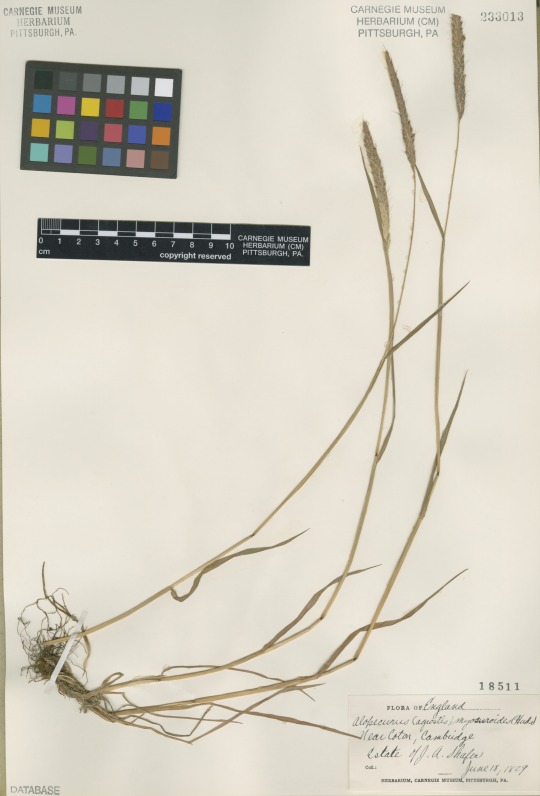By Mason Heberling

Herbarium specimens provide key insights into the Anthropocene. In many cases, natural history collections are the only baseline we have to understand the widespread, complex effects of human activities on the earth systems over the past century.
This grass species shown here is of particular interest. This specimen was collected in Cambridge, England on June 18, 1829. This grass species (Alopecurus myosuroides), commonly known as “slender meadow foxtail” or “black-grass,” is a major weed in farm fields (especially wheat and barley), and can significantly reduce crop yields.
Unwanted plants (“weeds”) have been an ongoing fight for humans since the dawn of agriculture. The “Green Revolution” (1930s-1960s) was a point in human history when agricultural production increased at an enormous rate and at unprecedented scales, aided by technological developments in crop breeding, pesticides, herbicides, and fertilizers. It has been one time point suggested to mark the “official” start of the Anthropocene, a proposed geological era defined by human activities.
Herbicides are commonly used to control weeds to increase crop yields. With the increase of herbicides, some plant species have evolved resistance to these herbicides. In a cool study in PLoS ONE in 2013, Délye et al. did a DNA analysis of herbarium specimens collected from 1788 to 1975 to show that some individuals of this grass species already possessed the gene mutations associated with herbicide resistance well before herbicides were widely used! They show that the use of herbicides selected for these individuals, such that those individuals with herbicide resistance are now more abundant.
Who would have thought these specimens would be used this way. There are so many known and yet to be known uses of herbaria.
The collector of this specimen back in 1829 certainly didn’t think it could be used to understand the evolution and effects of herbicide use over 175 years later!
Botanists at Carnegie Museum of Natural History share pieces of the herbarium’s historical hidden collection on the dates they were discovered or collected. Check back for more!
